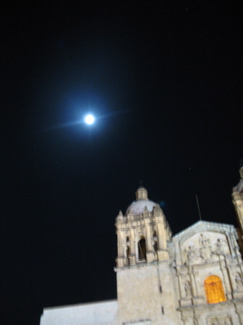The novel consists of vivid scenes based on Azuela’s experiences, linked through the central character Demetrio Macías. Though the scenes themselves strike me as raw, subtext and literary allusions, especially in Part III, together with the figure Luis Cervantes, offer an interpretation of the sequence.
Part III opens with a letter from Luis Cervantes written in 1915 from El Paso, where Azuela wrote the novel in 1915. The novel shows Luis Cervantes cowardly vis a vis battle, though Luis (from Ludovicus, “famous in battle) means the opposite, and using his skill with words to manipulate others, betraying the literary significance of his surname. Azuela emphasizes his character’s oppositeness to Miguel de Cervantes by writing Luis Cervantes 107 of the 108 occurrences in the novel. The unique “Cervantes” (in this edition) occurs I, vii, p. 12 “Anastasio … con suavidad tomó el brazo de Cervantes”).
Three Biblical references stand out in part III. The poet Valderrama quotes Genesis 3 (and gives the Latin original), just after Adam and Eve are cast out of the garden (III, I p. 61 “—Los serranos —le dijo con énfasis y solemnidad—son carne de nuestra carne y huesos de nuestros huesos... "Os ex osibus meis et caro de carne mea"... Los serranos están hechos de nuestra madera... De esta madera firme con la que se fabrican los héroes... “).
This citation suggests looking more closely at Luis Cervantes and Solís, for references to the serpent, though I will not do that here. Part III, iv (p. 64) refers to their march as Exodus and a sequence of references to the crucifixion are set in motion when the poet Valderrama reenacts Peter observing the transfiguration of Jesus (just before his arrest and crucifixion) in III, iii p. 63 making a clear identification of Demetrio with Jesus.
—`;Señor, Señor, bueno es que nos estemos aquí!... Levantaré tres tiendas, una para ti, otra para Moisés y otra para Elías."
Demetrio as indigena is another point. The narrative points out Demetrio’s pure indigenous features in I, xv (p. 23), contrast the various güeros. Allusions to Aztecs occur throughout. It is a complex topic that I will not pursue further here.
The allusions in Part III, however, culminate in an intriguing allusion that for me goes to the issue of Azuela writing this novel in mid-Revolution. Demetrio’s name, which means “follower of Demeter”, goddess of grain is a classical name. Part III, which is choc full of allusions, describes Demetrio’s meeting with his wife – a storm comes up and they take shelter in a cave (III,vi p. 66)
La lluvia comenzó a caer en gruesas gotas y tuvieron que refugiarse en una rocallosa covacha.
after which she pleads with him not to leave her, suggesting an allusion to Aeneas’ “marriage” to Dido when they take shelter in a cave. All of my copies of The Aeneid, having taken shelter from the exploding hot water heater in my building, are unfortunately inaccessible for comparing the wording. (Note that Camilla is also a character in the Aeneid, leader of the Volscian women warriors.) In light of this description, the opening description of Demetrio’s wife fleeing with the child against the backdrop of the burning house (recalled later in the middle of the novel) evokes (in inversion) Aeneas fleeing burning Troy carrying his father on his back. The emphasis on Demetrio’s son is interesting in this connection. Aeneas must leave Dido, must travel on, though he himself is not destined, nor is his son, to see Rome, the city their descendants will found.

No comments:
Post a Comment